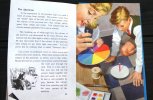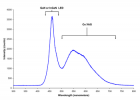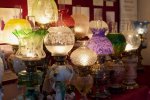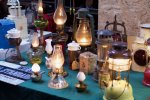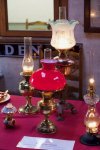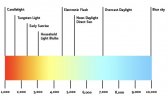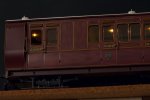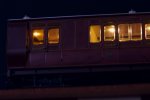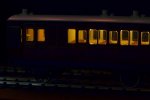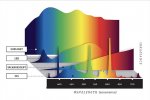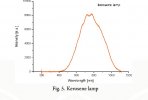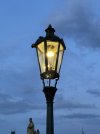I guess you could filter out the 450nm blue which would leave you a dim yellowish light, which might suit our purposes quite well. How effectively one could filter the blue is another question. I guess experiments are called for!
Thanks for the background info. Reducing the blue spike should be possible with a yellow filter - the fact that it is a spike should mean the specific yellow colour won’t make too much difference. The colour of what you are left with is hard to predict - often ‘warm white’ LEDs have a pink tint, which is the main reason I don’t want to use them.
It would be very good to find LEDs that look credibly like an oil (or gas, or even early yellowish incandescent) lamps. Their life is much greater than any model railway is likely to need, they are usually quite cheap, they are very small, and in general they do not run hot, at least at the likely power we would want.
I am probably more than averagely fussy about the colour of light - the result of spending a big chunk of my career as a stage lighting designer and in lighting education. That’s why I am investigating the use of incandescent (filament) lamps - run at low brightness, they give the warm, continuous-spectrum colour of a flame-based source like an oil lamp. Run at lower than rated voltage, their life will be huge - you don’t have to under-volt a filament lamp by much to greatly increase its life. Heat may be an issue - the horse box I am working on has a brass roof to act as a natural heat sink, but I might need to make specific arrangements to get rid of heat in an all-plastic model. Cost-wise, my lamps cost £1.46 for 10 from Rapid, so hardly breaking the bank:
My biggest concern is the additional power needed from the DCC decoder - an under-volted lamp still draws around 50mA, and most decoders only produce 100-150mA on their function outputs. I will be investigating using a simple circuit to increase the available current, for coaches with several lamps.
Right now, two have blobs of amber headlamp paint drying off. I will report back after dusk, when I can best control the ambient light in the room.
Richard - I’m looking forward to seeing what your experiment produces.
I have a desk led lamp that changes color from a hard bluish light to a softer yellowish light, my question is how is this accomplished and could it be done to the coach lights?
Michael - most likely your lamp has two sets of LEDs, one with a low colour temperature, similar to the warm light output of a traditional filament lamps, and a second with LEDs producing a higher colour temperature, cold white light, similar to daylight. The two sources will be mixed to vary the balance of the light output from warm to cool. I have a similar lamp with specially designed LEDs that produce accurate colour rendering of objects illuminated by the lamp. It’s intended for colour-critical work such as photography.
The difficulty with this approach in a model is that you need the light fitting to mix the two sources together, so you don’t get multi-coloured shadows. That takes up space, which we generally don’t have.
Nick.

